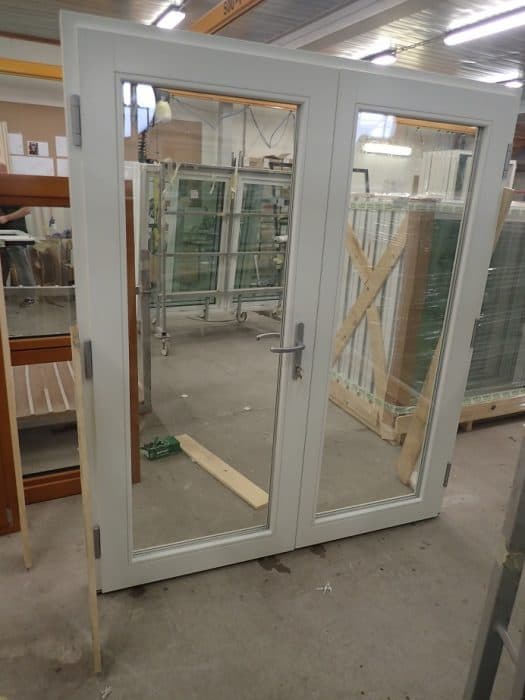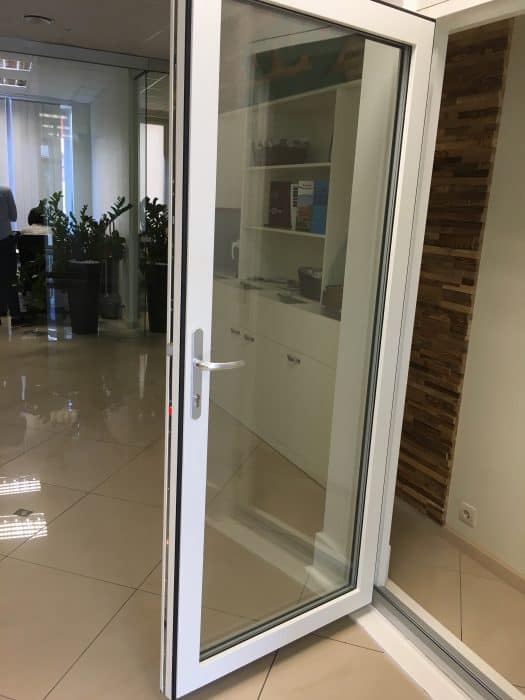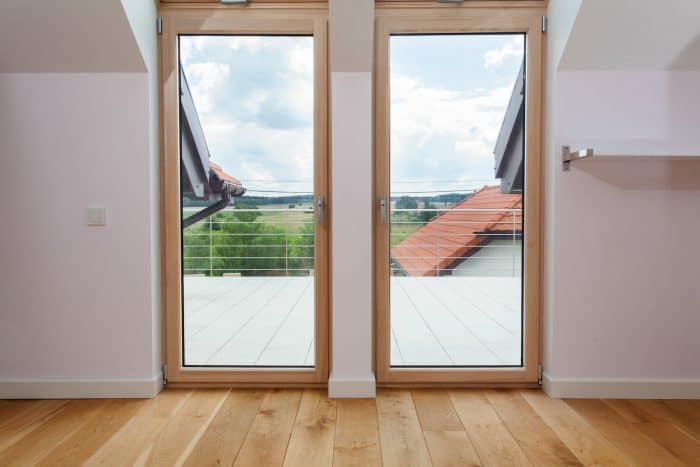Gentle ventilation and easy access
If you have a Juliet balcony then the inward opening Tilt & Turn door is the perfect choice. This design works really well to provide gentle ventilation when tilted and easy access to a roof terrace for instance, when turned using the side hinges. Tilt & turn doors are supplied as a single or double inward opening where the active leaf tilts & turns and the passive leaf is side hung only. Our doors are supplied framed with a low-level threshold, 3-point locking system and safety/secure glazing as standard. Available in timber and timber aluminium clad.
Timber Tilt & Turn Door
Features include:
- Bespoke made-to-measure inward opening tilt & turn door
- Robust and durable 78mm deep door leaf
- Available in a range of U-Values from 1.4 to 0.7
- Advanced insulation and glass technology for ultimate weather protection
- Constructed using finger jointed laminated pine timber designed to last a lifetime
- Friction stay on leading door
- Secure 3-point locking system
- Choice of glazing bars and ironmongery
- Factory finish to any RAL or NCS colour
- Optional Trickle ventilation with matching RAL colour
- Super Low-E double glazed panel with argon filled unit. Triple glazing with warm edge spacer optional
- Delivery from 6 – 8 weeks
- Installation service available on request
Alu-Clad Timber Tilt & Turn Door
Broxwood’s Timber Tilt & Turn Door is also available with aluminium cladding. The addition of low-maintenance hard-wearing aluminium cladding provides the ultimate protection against the elements.
Additional features include:
IV78 Inward Opening Technical Information:
- Frame: 78mm wide x 78mm deep
- Sash: 105mm wide x 78mm deep
- Glass: Double Glazing 24mm or Triple Glazing 36mm and 52mm / Argon gas and choice of coating
- Hardware: KurzemesKey, ASSA, Roto
Save Energy by choosing the right U-value
Broxwood windows and doors are amongst the most energy efficient on the market. We offer five energy ranges, from 1.4 to 0.7 U-value, all of which exceed current UK building regulations. Choosing the right U-value is mostly common sense; the simple rule being all our windows will save energy but choosing a U-value which is over specified for your property is unlikely to return greater savings.


